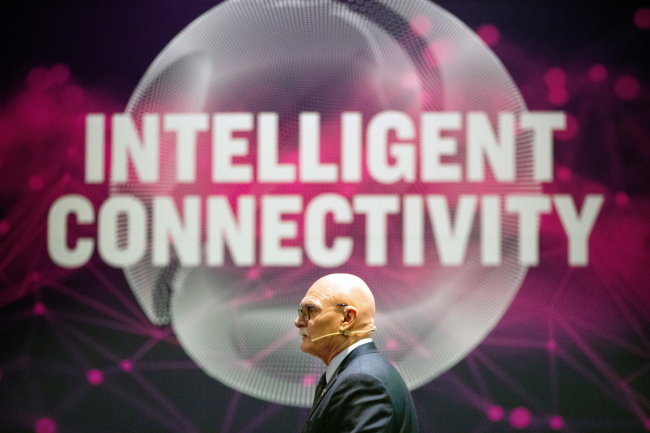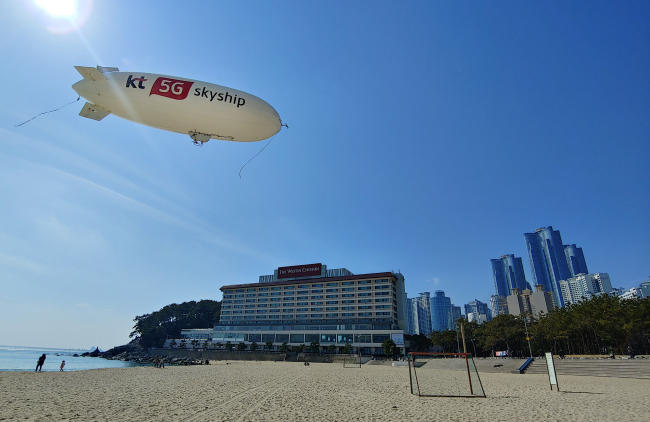Mobile & Internet
5G is real: MWC 2019 set to present new world with new connectivity
With the commercial rollout of fifth-generation wireless networks just around the corner, companies around the world are set to showcase 5G-related technologies during the world’s largest mobile event this week.
Handset and telecom firms have descended on Barcelona in Spain for the Mobile World Congress that kicks off on Feb. 25. Under the theme of “Intelligent Connectivity,” the four-day event features companies demonstrating how new technologies will change everyday lives.
There has been much hype surrounding 5G in the past few years, and the world still needs to wait for full-fledged services, but this year’s MWC is expected to paint a clearer picture about a world powered by 5G networks.
 |
EPA-Yonhap |
“I have never seen tech companies at MWC rallying behind a single banner. And that is 5G,” said a senior official from a South Korean telecom giant, who visited the MWC venue in Fira Barcelona before the event officially kicked off.
Some mobile manufacturers, such LG Electronics and Huawei, unveiled their first 5G-based smartphones on Feb. 24, a day before the official launch of the MWC. Samsung’s Galaxy S10 5G will be demonstrated to the public after its debut in San Francisco on Feb. 20.
South Korean telecom giants will also unveil platforms that capitalize on the hyper-speed, low-latency network. These are expected to include futuristic hotel services, smart factories and unmanned blips.
Some 222 Korean firms have come for the event, with combined investments of 100 billion won ($89 million) and some 3,000 officials. They will join some 2,500 companies from around the world in presenting technologies that span eight areas: connectivity, artificial intelligence, industry 4.0, immersive content, destructive innovation, digital wellness, digital trust and the future.
Leading telecom firms at the event include Verizon, AT&T and NTT Docomo, along with IT giants like Microsoft, Google Cloud, Amazon Web Service, Huawei, Xiaomi, Nokia, Ericsson, Renovo, Intel and Qualcomm.
5G handsets
Gaining attention ahead of the MWC was LG Electronics’ first 5G-powered smartphone, the V50 ThinQ 5G. With the flagship phone, the company joins Samsung in having 5G-capable smartphones in the market.
LG Electronics also unveiled another flagship smartphone, the G8 ThinQ, based on the current 4G network. The phone is designed to attack the market before standalone 5G services are available, the company said.
“From premium products to practical ones, we will continue to cater to our customers’ needs by releasing phones that go beyond expectations,” said Kwon Bong-seok, president of LG’s home entertainment and mobile communications businesses.
The company, however, did not release a foldable phone. Samsung had grabbed global attention with its first foldable gadget, the Galaxy Fold, in the US last week.
Kwon had commented on Feb. 15 that it was “too early” to bring to a smartphone the same concept of its iconic rollable OLED TV that had wowed the world during January’s Consumer Electronics Show.
Huawei, the world’s second-largest phone maker after Samsung, was also in line to unveil its 5G foldable smartphone, the Mate X, during a press conference at the MWC.
The design of the Mate X was earlier leaked on an advertising banner set up at the MWC. It revealed a single foldable display. On the other hand, the Samsung Galaxy Fold has two folds -- a small one on the front and a larger one inside the unfolded device.
Telecom giants’ rush
As companies fought for attention with their versions of what a 5G-powered world would look like, South Korean telecom giants allowed a peak of their platforms incorporating the advanced network into everyday lives on Feb. 24.
During the MWC sessions, SK Telecom, KT and LG Uplus said they would demonstrate how the 5G network can transform business and leisure when the first 5G-based smartphones hit the market this March.
KT will demonstrate the extent to which seamless communication is possible regardless of distance. Using its remotely controlled blip, called 5G Skyship, the company showed images sent in real time to Barcelona all the way from South Korea’s southern port city of Busan.
As the 5G Skyship’s high-definition camera is capable of delivering flawless images sent from halfway around the world, the company said the technology could be used in search-and-rescue missions in the event of natural disasters and other emergencies.
 |
KT said Sunday it will be remotely controlling its KT 5G Skyship airship drone in the skies above Haeundae in Busan from the location of the Mobile World Congress 2019 in Barcelona, Spain, through the fifth-generation network. |
“Signals capable of controlling the blip’s camera are sent from Busan to Barcelona through international circuit lines. … Visitors can control the blip’s movement whatever they see fit and enjoy the night scenery of Busan from Barcelona,” said KT officials.
Meanwhile, KT’s biggest rival, SK Telecom, unveiled the 5G Hyper Space platform that could blur the line between the virtual and real world by allowing users to toggle back and forth between the two.
“Having copied the images of hotels and offices in the real world, those wearing the VR machine can hardly feel the difference in the virtual world,” said an official from SKT. “In accordance with the commercial rollout of 5G, we will expand the service.”
According to SK Telecom, users can visit a restaurant and see a hotel room “virtually” via virtual reality goggles before making reservations. Reservations made in the virtual world would also be effective in the real world.
The two companies will also unveil a system for “smart factories” connected by the 5G network. By processing enormous volumes of data at hyper speed, the system can reduce the amount of defected products and the risk of safety accidents, they said.
Korea’s third-biggest mobile carrier, LG Uplus, revealed a service that allows consumers to enjoy sports events and music performances with advanced quality. The company said the hyper-speed network allows users to watch footage with minimum latency.
By Yeo Jun-suk/The Korea Herald (jasonyeo@heraldcorp.com)






![[From the Scene] Gigantic Olive Young store lures young trend-setters in Seongsu](http://res.heraldm.com/phpwas/restmb_idxmake.php?idx=151&simg=/content/image/2024/11/21/20241121050065_0.jpg)

